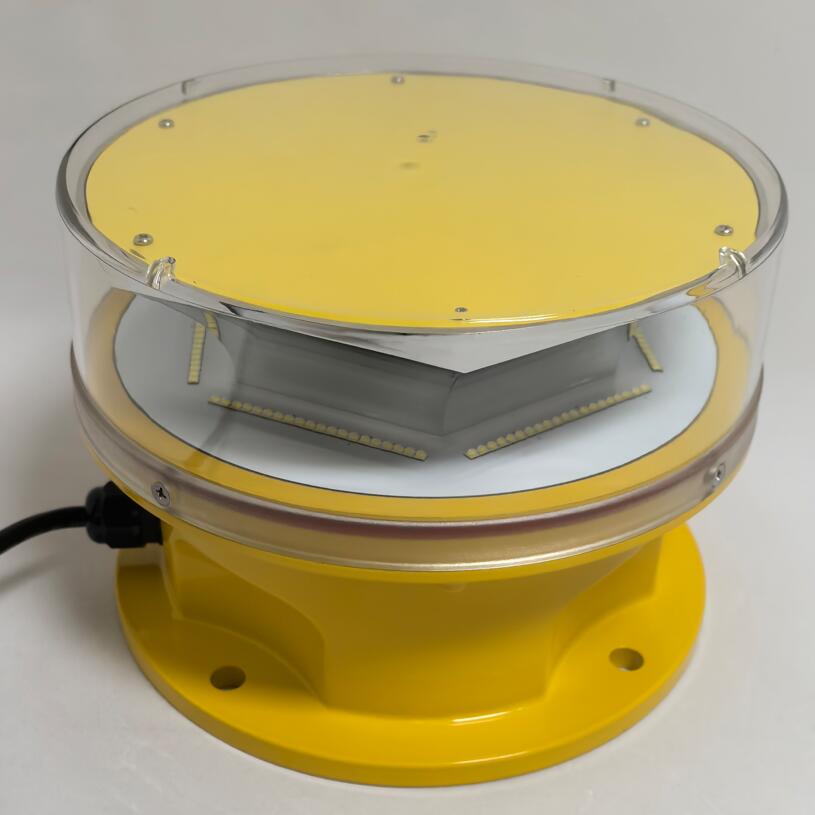Aviation Obstruction Lamp: The Guardian of Nighttime Flight Safety
In the vast expanse of the sky, where aircraft navigate through varying altitudes and weather conditions, aviation obstruction lamps serve as silent sentinels, ensuring safe passage. These specialized lights mark tall structures—such as skyscrapers, wind turbines, and communication towers—preventing collisions and enhancing aviation safety.
As urbanization accelerates and infrastructure grows taller, the role of aviation obstruction lamps becomes increasingly critical. This article explores their types, applications, regulatory standards, and emerging innovations, highlighting their indispensable contribution to modern aviation.
Types of Aviation Obstruction Lamps
Different structures require different lighting solutions based on height, location, and visibility requirements. The main categories include:
1. Low-Intensity Obstruction Lamps (Type A & B)
Type A (Fixed Red): Used for structures below 45 meters (e.g., small buildings, cranes).
Type B (Flashing Red): For structures where steady lights may be confused with other signals.
2. Medium-Intensity Obstruction Lamps (Type C, D, & E)
Type C (Red, Flashing): For structures between 45–150 meters.

Type D (White, Flashing): Used during daytime and twilight for better visibility.
Type E (Dual Red & White): Automatically switches based on ambient light.
3. High-Intensity Obstruction Lamps (Type F & G)
Type F (White, Flashing): For structures exceeding 150 meters, visible up to 20 nautical miles.
| aviation obstruction lamp |
Type G (Xenon Strobe): Ultra-bright flashes for critical high-rise obstacles.
Key Functions of Aviation Obstruction Lamps
Beyond simply marking obstacles, these lamps fulfill several crucial roles:
Preventing Mid-Air Collisions: Pilots rely on them to identify hazards, especially in low-visibility conditions.
Compliance with Aviation Laws: Regulatory bodies mandate their use to ensure uniform safety standards.
Supporting Urban Air Mobility (UAM): With drone deliveries and air taxis on the rise, obstruction lamps help integrate new aerial traffic safely.
| aviation obstruction lamps |
Global Regulatory Standards
Different regions follow specific guidelines to ensure aviation obstruction lamps meet safety requirements:
ICAO (International Civil Aviation Organization): Sets global recommendations for obstacle lighting.
FAA (Federal Aviation Administration): Defines U.S. standards under AC 70/7460-1L, specifying colors, flash rates, and intensity.
EASA (European Union Aviation Safety Agency): Oversees European compliance, ensuring harmonization across member states.
These regulations ensure consistency, allowing pilots to recognize obstruction lamps universally.
Technological Innovations in Aviation Obstruction Lamps
Advancements in lighting technology have significantly improved obstruction lamp performance:
LED Adoption: Energy-efficient, long-lasting, and brighter than traditional incandescent bulbs.
Solar-Powered Systems: Ideal for remote locations, reducing reliance on grid electricity.
Smart Monitoring & IoT Integration: Real-time diagnostics and remote control for proactive maintenance.
Adaptive Lighting: Automatically adjusts brightness based on weather and time of day.
Challenges and Future Developments
Despite their effectiveness, aviation obstruction lamps face some challenges:
Light Pollution: Excessive brightness can disrupt wildlife and nearby communities.
Maintenance in Harsh Environments: Extreme weather conditions can degrade performance.
Future trends may include:
AI-Powered Predictive Maintenance: Reducing failures through data analytics.
Eco-Friendly Designs: Minimizing energy consumption and environmental impact.
Integration with Urban Infrastructure: Smart city initiatives may incorporate obstruction lamps into broader safety networks.
Aviation obstruction lamps are indispensable in safeguarding air travel, guiding pilots safely around potential hazards. As technology evolves and airspace becomes more crowded, their role will only grow in importance. By adhering to global standards and embracing innovation, the aviation industry can ensure safer skies for generations to come.
